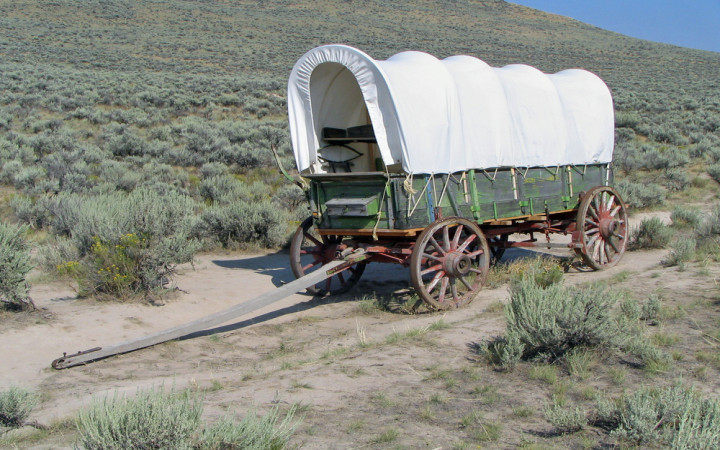Have you ever dreamed of being a pioneer or an explorer? Can you imagine being the first person to discover and create a map of a new area of the world? How would you respond if the president of the United States asked YOU to explore a new territory?
In 1803, U.S. President Thomas Jefferson negotiated the purchase of France's claim to the Louisiana territory. The territory was more than 828,000 square miles of land that included all or part of 14 current U.S. states and two Canadian provinces. When the “Louisiana Purchase" was completed, Jefferson wanted to explore these new lands.
He chose Meriwether Lewis, his personal secretary and a skilled frontiersman, to lead an exploration of these new lands. Lewis chose William Clark to join him on the expedition. Together, Lewis and Clark recruited other men to join their Corps of Discovery and began to plan their trip.
One of Jefferson's main goals was to find a direct route by water from the Mississippi River to the Pacific Ocean — the so-called “Northwest Passage." Jefferson hoped such a route would connect the new western lands to routes already used to buy and sell goods.
He also wanted Lewis and Clark to map the area and catalog its natural resources. Along the way, they would also claim control over the Native American tribes in the new lands.
These new lands to the west were so foreign that Jefferson believed the expedition might encounter woolly mammoths, erupting volcanoes and mountains made of salt. Although Lewis and Clark did not see any such fantastic sights, they did see many amazing things as they traveled more than 8,000 miles over the course of two years, four months and 10 days.
Even though they didn't find the Northwest Passage Jefferson hoped for, Lewis and Clark's team did reach the Pacific Ocean. They also mapped the area, documented more than 300 plants and animals that hadn't been known about before, and established relationships and trade with more than two dozen Native American tribes.
Upon reaching the Pacific Ocean, Clark estimated that they had traveled 4,162 miles from the Missouri River. Would you believe his guess was within 40 miles of the actual distance?
Lewis and Clark did not succeed on their expedition without a lot of help from the native peoples they encountered along the way. One good example of such help was Sacagawea, a Native American woman who accompanied her husband, Toussaint Charbonneau, on the expedition.
Although little is known for certain about Sacagawea, scholars believe she helped Lewis and Clark navigate through some territory she was familiar with. She also served as an interpreter from time to time.
Perhaps most important, though, the presence of a native woman as part of the expedition probably reassured the tribes they encountered that the expedition was a peaceful mission.
On May 14, 1805 — one year after the expedition began — Sacagawea saved the journals and records of Lewis and Clark when they fell out of a capsized boat. Lewis and Clark praised her quick action and named the Sacagawea River in Montana in her honor on May 20.




